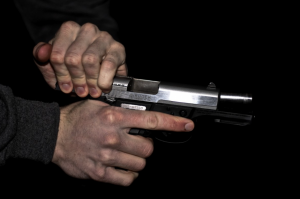In developing the ideas of Predictive Policing, American scientists are trying to analyze the entire list of people’s social contacts. One idea is that the spread of criminal violence in society is mathematically similar to the spread of infectious diseases.
Today there are countless stories about the increase in crime and violence. It seems that the numbers are growing each day. Fortunately, there are many technological solutions to prevent crime from occurring. Technology is helping to catch criminals in the act and make it harder for them to get away. Several innovative solutions have been put forth which help to identify the faces of criminals and stop them before they strike. The following highlights some of the latest technologies being applied in the fight against crime and violence.
Examples of technologies that help fight crime
Big data for law enforcement
One of the many tools being used for crime prevention and detection is Big Data. This encompasses a range of technological developments. One example is the development of facial recognition software, which will allow you to recognize someone in a photo. This is based on a huge amount of facial recognition technology, which has been developed by different companies. Another application includes high-resolution images, which can help identify and locate missing persons.
Another technology applied by law enforcement is the implementation of new high-resolution surveillance equipment. This equipment can track faces in a live environment, which is a huge step forward in identifying and locating criminals. One such piece of equipment is called the Face Recognition Algorithm which is capable of identifying a human face in a crowd and determining their identity within seconds. This technology is already being used by police forces in the US and UK.
The neural network is listening
If a crime cannot be prevented, it has to be detected quickly. In Europe, video cameras are used to monitor the situation on city streets.
In the US, artificial intelligence not only sees but also listens. The fact is that in America, often firearms are used. And the easiest way to detect such crimes is by sound.

The ShotSpotter intelligent system has already been deployed in 100 major American cities. It finds the sounds of gunshots and instantly informs the police about the location of the shooting.
Before the system was used, some of the witnesses needed to call the rescue service. On average, it took up to five minutes, and many shootings were not reported to authorities at all.
But now the process is fully automated. Thanks to ShotSpotter, the clearance rate in homicide cases has increased by 30 percent and victims are quickly sent to the hospital. Doctors arrive on the scene 3.5 minutes faster.
To make the ShotSpotter system work, microphones are installed on city streets. They are placed on lampposts, building roofs, and other hard-to-reach places.
Collect a file on everyone
Artificial intelligence systems continue to work even if the police have already caught the culprit. For years, US police had no single database of citizens.
A suspect apprehended in one state could conceal that he or she had been previously prosecuted or was wanted in another state. Requests between police departments in different regions were handled over several weeks. During this time, some suspects have managed to evade punishment.
But the Palantir Technologies program is a solution to the situation. The program is an intelligent system for analyzing large amounts of information. It has access to a multitude of government databases containing millions of documents, snapshots of previously convicted citizens, arrest records, and criminal case reports.
The creators of the system paid special attention to automobile transportation. In the US almost everyone has a car, and the identification is usually a driver’s license. Therefore, by tracking only the movements of cars, it is possible to establish connections between people, even if they are officially nobody to each other.
Predictive Policing is everywhere
In developing the ideas of Predictive Policing, American scientists are trying to analyze the entire list of people’s social contacts. One idea is that the spread of criminal violence in society is mathematically similar to the spread of infectious diseases.
Researchers have analyzed the social connections between victims of Chicago gun crimes and their killers.
Scientists speculated that those who were close to the victims and perpetrators may themselves soon find themselves on the crime watch list. Based on this data, a list of 400 Chicagoans was compiled in 2016 that police should have been looking at.
Judicial authorities in the US, which determine the fate of detainees, also rely today on the help of artificial intelligence. Of course, judges have not yet been replaced by robots. But the Northpointe system and others like it can analyze all the backgrounds of an accused person and make a recommendation on whether or not he or she can be released under house arrest.


Join the conversation!